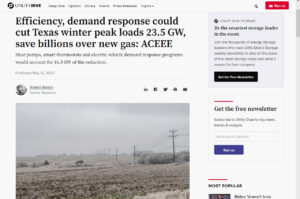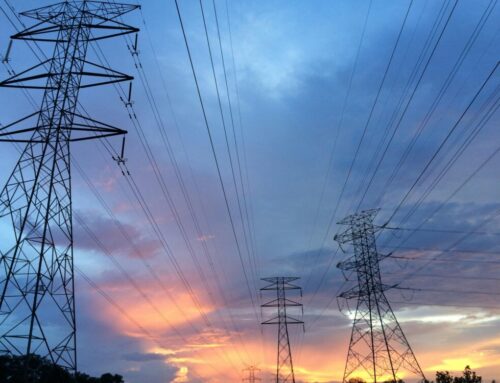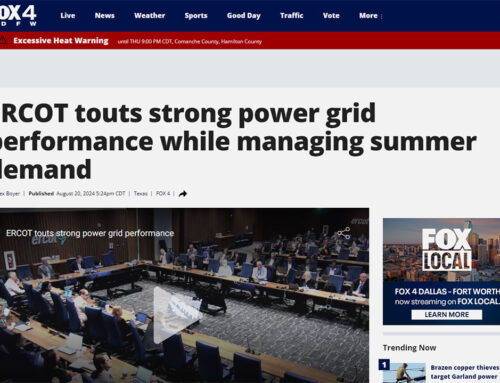 Article published on May 12, 2023 by Robert Walton in utilitydive.com.
Article published on May 12, 2023 by Robert Walton in utilitydive.com.
Heat pumps, smart thermostats and electric vehicle demand response programs would account for 16.5 GW of the reduction.
Texas lawmakers are considering spending billions to build gas-fired power plants, but a report from the American Council for an Energy-Efficiency Economy concludes efficiency and demand response resources would cost less while adding more flexibility to the grid.
“It’s a win-win because it would cut dangerous spikes in energy demand and at the same time save money for families and businesses,” Steven Nadel, ACEEE executive director and lead author of the report, said in a statement.
In April, Senators passed a $10 billion “energy insurance program” to develop a fleet of gas-fired power plants in the Electric Reliability Council of Texas that would be capable of providing 10,000 MW. They have also approved a plan to provide 20-year, zero-interest loans to companies building power plants. Both measures are now in the House of Representatives.
ACEEE modeled the effect of creating or expanding 10 utility energy efficiency and demand response programs in Texas and found peak load reductions exceeding the 10,000 MW of new supply lawmakers are considering. Implementing the programs from 2024 to 2030 could reduce summer peak loads by about 14,800 MW and reduce winter peak loads by about 23,500 MW, according to ACEEE’s white paper.
Heat pumps, smart thermostats and electric vehicle demand response programs save the most, ACEEE said, yielding a 16,500 MW winter peak reduction that would save consumers about $133 million annually. These programs, and demand response programs for central air conditioning, can cut summer peak by about 8,800 MW at an additional average cost of about $128 million a year, ACEEE concluded.
The programs would cost about $1.2 billion annually, which ACEEE said is “substantially below” the $10 billion to $18 billion in estimated capital costs for the proposed ERCOT generation insurance program.
Consumers save even more when the additional costs for generator fuel, maintenance and transmission infrastructure are included, ACEEE noted. “Building many more power plants to run when demand is highest is just a more expensive fix than is necessary here,” Nadel said.
“An approach like ACEEE’s would create the same reliability benefits and actually save people money,” energy analyst and Stoic Energy President Doug Lewin wrote on his popular substack analyzing the Texas power market.
The Lone Star State has seen peak load grow by 9% over the last four years, ACEEE noted.
Population growth in Texas has stressed the state’s grid, state energy officials said this week. ERCOT’s summer Seasonal Assessment of Resource Adequacy shows an anticipated base summer peak load of 82,739 MW and approximately 97,000 MW of summer-rated resource capacity to meet the demand. Blackouts are possible if the system is stressed.
ERCOT President and CEO Pablo Vegas said in a press conference last week that the grid operator’s models estimate this summer’s peak could be about 6,000 MW greater than last year.
“The most severe risk scenarios assume very high peak load, extreme unplanned thermal outages based on historic observations, and extreme low wind output,” he said.





